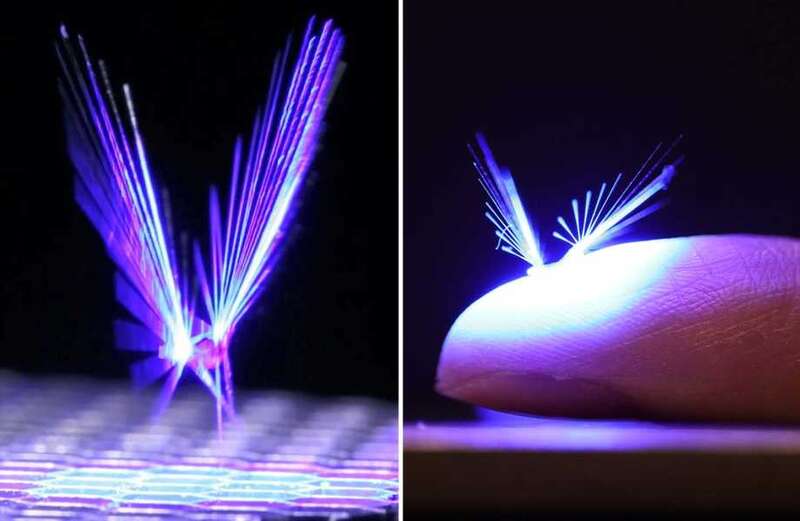RESEARCHERS have developed tiny robot "flies" that travel via wind and are controlled by light.
The team, who hails from Tampere University in Finland, published their findings in the journal Advanced Science.


The innovation, dubbed the FAIRY project, was inspired by dandelion seeds and could have potential application opportunities in agriculture.
In the future, millions of these tiny robots could carry pollen and be dispersed freely by natural winds.
What's more, they could be steered by light toward specific areas with trees awaiting pollination.
 Artificial intelligence reaches major milestone 'for the first time ever'
Artificial intelligence reaches major milestone 'for the first time ever'
Hao Zeng, Academy Research Fellow and lead study author, explains: "This would have a huge impact on agriculture globally since the loss of pollinators due to global warming has become a serious threat to biodiversity and food production."
This includes bees, which are essential to our ecosystem but facing a rapid decline in population.
Scientists developed the "fly robots", which weigh 1.2 mg and have a porosity of 0.95, using polymer.
Because of their structure, they can easily float in the air as directed by the wind.
They also come equipped with a stable separated vortex ring generation that enables long-distance wind-assisted traveling.
"The fairy can be powered and controlled by a light source, such as a laser beam or LED," Zeng says.
This means light can be used to change the shape of the tiny dandelion seed-like structure.
By changing its shape, the fairy can also manually adapt to wind direction and force.
A light beam can further be used to control the take-off and landing actions of the polymer assembly.
Next, the researchers want to focus on improving the material sensitivity to operate the device in sunlight.
 Video reveals robot that's learned to run, flip and grab just like a person
Video reveals robot that's learned to run, flip and grab just like a person
In addition, they want to improve the structure so it can carry micro-electronic devices such as GPS and sensors.
And according to Zeng, there is potential for even more significant applications.
He said: "It sounds like science fiction, but the proof-of-concept experiments included in our research show that the robot we have developed provides an important step towards realistic applications suitable for artificial pollination.
"This would have a huge impact on agriculture globally since the loss of pollinators due to global warming has become a serious threat to biodiversity and food production."
The FAIRY project started in September 2021 and will continue until August 2026.


































